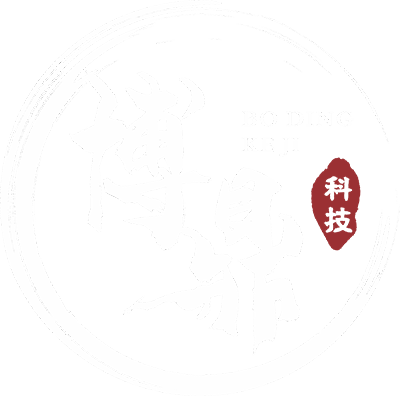Speaker Science Series—Is the speaker design simple? In fact, it's more complicated than you think
Author: Boding Technology
Release Time:2022-11-29 15:09
Share
The speaker is the soul of a sound system and plays a decisive role in the sound of the system. Many audio beginners are very confused when choosing speakers and do not know how to choose. This article hopes to explain all aspects of the speaker market in as much detail as possible, hoping to help you choose your favorite speaker.
When answering questions about speaker design on platforms such as Zhihu and Toutiao, I saw that many friends always thought that "the speaker is not an assembled thing, it is very simple". Let's start a chat here about the simple things that make speakers, and I hope you will discuss it kindly. It is not welcome to give a position based on wants, and go online.
In fact, any kind of product, really drill in, you will find that the doorway inside is very deep, the so-called "three hundred and sixty lines, line out of the top". People who say that a product is simple and easy to do either do not understand or are intentionally or unintentionally misleading.
Speaker design and production is a relatively mature field. In terms of design, whether it is the common inverted or closed type, or the maze type or the horn or the empty paper cone, the principle and formula have long been formed and disclosed. There are also many related simulation and simulation software, and it is relatively difficult to design a pair of speakers. Therefore, there are "big gods" on the Internet who can design a speaker with only one version. There is also the myth that a certain brand adjusts a three-way floor speaker in two hours. But in fact, the status of domestic speakers in the world is very low (before their NS17 was tested by ASR, they said that they had never tested a speaker from China). And powerful such as Japan, in the sound source, amplifier and other products in full bloom, but in the field of top speakers, it is a blank, there is no convincing brand.
Are speakers simple? It's very simple, not to mention the making of speaker cabinets, which can be done by any carpenter in the town (the first pair of boxes were made with the help of Li's cousin-in-law), which is very simple. If it is assembled, it is simpler, just a few parts, some domestic brands can be installed by inviting two people at will. You can too, this really can't be simpler (which is one of the reasons why various speaker products on the Internet are endless).
However, from another point of view, speaker design is difficult. On the one hand, although those principle formulas are mature, the qualifications given are basically ranges rather than definite values. For example, how large the speaker volume design needs to be is related to the unit caliber and the low-frequency dive of the speaker. But this is a range value, not that bigger is better, not smaller is better, or even the median value is the best. The specific amount depends on the requirements of the speaker designer, and this requirement varies from person to person. Like some brands, just find an empty box on the Internet and put it in, and then the sound will go against the sky, and this kind of mouth cannon. His own NS17 speaker, just four pairs of sample boxes of different volumes, was finally finalized.
In addition to speaker inverting tube parameters, crossover design, etc., formulas and simulations can only give a quantitative range. The final specific data is not determined in the middle of the commissioning. Among them, the crossover is the soul of the speaker, the design and debugging is extremely level, or take their own NS17 as an example, the optical crossover has made eight versions out, and then settled down after a long time comparison.
Of course, if you ask for sloppiness, these are not a problem, do it casually, you can make a sound. Again, the key question is whether these setpoints are appropriate and can only be determined during debugging.
During the debugging process, the data of the speaker needs to be determined by combining hearing and test parameters. Of course, if the first version is finalized, the parameters are not measured, and these links can be dispensed with.
In terms of parameters, this involves the problem of speaker testing. Speaker parameter testing is easy to say, and there are many ways to test without the need for an anechoic chamber. However, accuracy becomes an issue. The most accurate way is still to measure it with an anechoic chamber. The investment in a set of professional anechoic chambers can be said to be astronomical for small speaker factories (the investment in anechoic chambers in our unit factories is in millions). In fact, even many well-known big brands (in fact, many well-known speaker factories, not large in terms of volume), do not have their own anechoic chambers.
On the other hand, the sound of the speaker is far from enough to see the parameters alone, and the hearing is still the final judgment method (this is not to say that the parameters are not important, on the contrary, parameter indicators are extremely important, and discussing sound without parameter indicators is a castle in the air). Audio products have the situation that the parameters and sound are not completely consistent, and this situation is particularly common for speakers. And the sense of hearing itself is different from person to person. You like the low frequencies to be more solid and thicker, he likes to be more elastic and have less volume. You like to be brighter at high frequencies, and he likes high frequencies to be darker. And this is tuning, unless you don't care about your own listening sense to debug, then what the product will look like, only God knows.
Another important factor is the unit. For speakers, the unit is as important as the chip in a mobile phone. Unlike mobile phone chips, however, they are not standardized (on the contrary, they are highly customized products). There are dozens or hundreds of unit factories around the world, and thousands of product types. But when you really pick it, you will find that the units on the market are more or less "problematic". These "problems" include but not limited to problems with parameter specifications, as well as mismatches between indicators and requirements, problems on the curve, and so on. In short, the probability of using it and making a good voice is actually very low.
Tiger 180 mentioned a unit on the market in his video (the regular licensed goods cost nearly 400,17 yuan (but there are less than 17 yuan in retail everywhere, and the wholesale discount of the formal agent is about 7% off)), the parameter indicators have obvious problems, and it is a low-level error. I also considered using a third-party unit when designing the NS1500, for the simple reason that it was too troublesome to make my own unit (there are more than 3000 versions of the NS<>'s woofer before and after), and it was expensive. But after choosing a high-end unit on the market (starting from about <> yuan), I decided to come by myself. The reason is also very simple, the parameter indicators are suitable, basically you can't pick out one. Either the Q value is not very good, or the equivalent volume is too large, either the low-frequency dive is not enough, or the frequency response curve is not very good, and the fluctuation is too large. The basic suitable is not nothing, the price is up to heaven (about <>), and if you want to change, basically don't think about it, the cost and communication will be dead.
In fact, the units on the market are all basic models, and without knowing your requirements, the unit factory is impossible to target, so it can only be regarded as semi-finished products. The speaker industry is a highly customized industry, not like shoes, just report a foot size. The figure below is a typical parameter for a woofer, that's not a footcode but two dozen, and that's not counting tweeters. And if one of them is not suitable, the final sound will be more or less problematic:
Therefore, in order to design a good speaker, it is very difficult to use an off-the-shelf unit (not nothing, of course, but the price is not cheap). Another problem is the need for personalization, each brand will have its own unique requirements for sound. This requirement is often reflected in the unit, although it can be adjusted in other links, but it is not as effective and simple as adjusting in the unit and the cost is low. Even some requirements can only be implemented in the unit, such as bearing power, such as low-frequency diving, such as Q value, and so on. In this case, most of the big-name speaker factories or demanding small speaker brands use their own customized or self-involved research and development units, and even have their own unit research and development capabilities, rather than using units currently available on the market.



